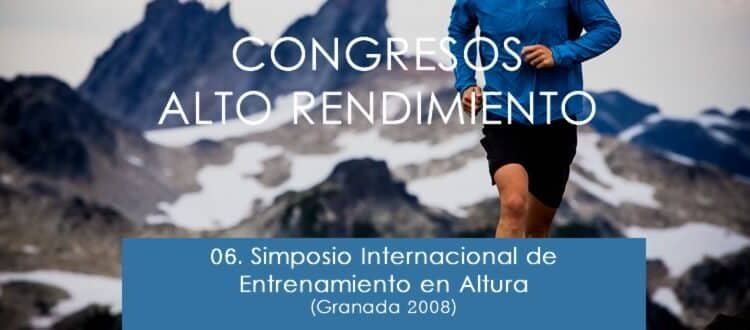Endeavor of high altitude training of japan national swim team.
Abstract endeavor of high altitude training
In the 2004 Athens Olympic Games, Japan swim team gathered eight medals including three gold medals. There are some important aspects to note behind these results. The long-term strategic plan toward the Olympics was established after Sydney Olympic Games. Coaches, scientists, physiotherapists, fitness trainers, etc., were came together to support the athletes. In addition, Japan national swim team has adopted high-altitude training since 1980’s. We have accumulated scientific evidences concerning high-altitude training for swimmers. Our challenges have been always by trial and error. Endeavor of Japan swim team will be presented. The high-altitude training of Japan national swim team. The number of participants to national team high-altitude training camps which were held just before the international competitions has increased after Sydney Olympic Games. This is because, in part, some private swimming clubs have organized their own high-altitude training camps separately, although high-altitude training camps were directed mainly by the Japan national swim team until 1990’s. Nine swimmers (45%) among the national team for Sydney Olympics participated in the preparatory high-altitude training camp.
The participants of the camps prior to the other major international competitions were as follows: 11 (28%) for 10th FINA world championships (Fukuoka 2001), 18 (45%) for 2002 Pan Pacific Swimming Championships (Victoria 2002), 17 (65%) for 11th FINA world championships (Barcelona 2003), 14 (70%) for Athens Olympic Games. Furthermore, all the swimmers for 12th FINA world championships (Montreal 2005) participated in the proceeding high-altitude training camp by team order. The results as a team have improved with the spread of the high-altitude training. In Sydney Olympic Games, only one medalist (out of three) adopted a high-altitude training program. In Athens Olympic Games, however, five out of six medalists took on high-altitude training regimens. Coaching staffs understand how they can use hypoxia environment more effectively than before, thus more effective and safer training programs could be built. The purposes of the high-altitude training for swimmers The distances covered in swimming races range from 50 to 1,500m and the races last from approximately 20 seconds to 15 minutes.
The ratios of energy supply systems used in swimming races (aerobic/anaerobic) were reported to be 2/8, 4/6 and 6/4 in 50m, 100m and 200m, respectively. As the distance increases, the importance of aerobic metabolism also increases. In the races over 400m, aerobic metabolism becomes the major energy supply system up to the ratio of 9/1. It is obvious from these facts that different physiological demands should be satisfied depending on which race a swimmer competes in. The main effect of the high-altitude training is believed to be the improvement of the aerobic capacity by the increase in red blood cells. Therefore, middle and long distance swimmers have adopted high-altitude training regimens since 1980’s. However, when we examined the effect of different training intensities during high-altitude training lasting 3 weeks, we found that not only aerobic capacity but also anaerobic capacity improved. In the project, six national-level competitors trained at about 2,200m above sea level. Anaerobic capacity improved depending on the given training intensities, i.e., with the increase in the ratio of high intensity training. Recently increased scientific evidences have shown that adaptations in anaerobic capacity would be enhanced by training under hypoxic environments. These results have encouraged sprinters to participate in high-altitude training camps in order to improve their anaerobic capacities. High-altitude training immediately before Athens Olympic Games. High-altitude training can be used for various purposes and each coach is responsible for selecting the right program for his/her athlete.
Overtraining is a major concern among coaches and athletes during camps. Staying and training at high altitude can easily cause overtraining syndrome to swimmers. Unfortunately, it is not so easy to detect whether swimmers are just in fatigued state caused by proper training or overtrained. Sometimes, it is too late when you realize it. Considering this, we adopted the small group policy in the camp immediately before Athens Olympic Games. As reported above, 14 swimmers from sprint to long distance swimmers underwent this preparatory camp. Training menus of different groups were customized based on the reported energy ratios of swimming. Training periods were also varied to match the purposes of each group. As a result, the training periods of the sprint, middle distance, and long distance swimmer groups were approximately 2, 3 and 4 weeks, respectively. Japan national swim team has adopted high-altitude training since 1980’s. We are still challenging by trial and error today. However, our endeavor to this field has made some changes to coaches’ understanding of hypoxic environment. High-altitude training is not a rare method anymore. How to create the optimal program for each athlete by combining high-altitude training with sea-level training would be the key. There would be no difference between high-altitude and sea-level training except for altitude. Training period, type, intensity, duration, etc., have to be customized to meet individual purposes and conditions. However, coaching staffs including medial staffs have to pay special attention to both physical and mental conditions of athletes in high-altitude training.






